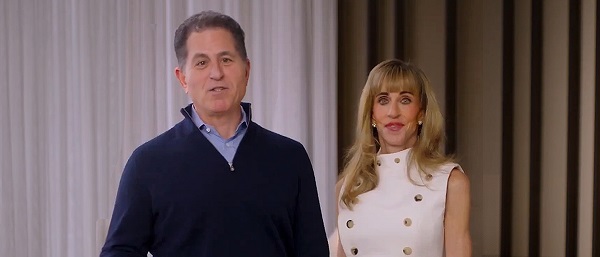Uncategorized
Mars touchdown: NASA spacecraft survives supersonic plunge

CAPE CANAVERAL, Fla. — Minutes after touching down on Mars, NASA’s InSight spacecraft sent back a “nice and dirty” snapshot of its new digs. Yet the dust-speckled image looked like a work of art to scientists.
The photo revealed a mostly smooth and sandy terrain around the spacecraft with only one sizable rock visible.
“I’m very, very happy that it looks like we have an incredibly safe and boring landing location,” project manager Tom Hoffman said after Monday’s touchdown. “That’s exactly what we were going for.”
A better image came hours later and more are expected in the days ahead, after the dust covers come off the lander’s cameras.
The spacecraft arrived at Mars after a perilous, supersonic plunge through its red skies that took just six minutes.
“Touchdown confirmed!” a flight controller called out just before 3 p.m. EST, setting off jubilation among scientists at NASA’s Jet Propulsion Laboratory in Pasadena, California, who had waited in white-knuckle suspense for word to reach across 100 million miles (160 million
It was NASA’s eighth successful landing at Mars since the 1976 Viking probes, and the first in six years. NASA’s Curiosity rover, which arrived in 2012, is still on the move on Mars.
Because of the distance between Earth and Mars, it took eight minutes for confirmation to arrive, relayed by a pair of tiny satellites that had been trailing InSight throughout the six-month, 300-million-mile (
“Flawless,” declared JPL’s chief engineer, Rob Manning. “Sometimes things work out in your
InSight, a $1 billion international project, includes a German mechanical mole that will burrow down 16 feet (5
Late Monday, NASA reported the spacecraft’s vital solar arrays were open and recharging its batteries.
Over the next few “sols” — or Martian days of 24 hours, 39
Banerdt called InSight’s first snapshot of the surface the first bit of science, albeit “nice and dirty.” He said the image would be cleaned and the black specks would disappear. That photo came from a camera low on the lander. Late Monday, NASA released a clean photo taken by a higher camera that showed part of the lander and the landscape.
The 800-pound (360-kilogram) InSight is stationary and will operate from the same spot for the next two years, the duration of a Martian year.
“In the coming months and years even, history books will be rewritten about the interior of Mars,” said JPL’s director, Michael Watkins.
NASA went with its old, straightforward approach this time, using a parachute and braking engines to get InSight’s speed from 12,300 mph (19,800 kph) when it pierced the Martian atmosphere, about 77 miles (114
Many Mars-bound spacecraft launched by the U.S., Russia and other countries have been lost or destroyed over the years, with a success rate of just 40
The three-legged InSight settled on the western side of Elysium Planitia, the plain that NASA was aiming for.
Museums, planetariums and libraries across the U.S. held viewing parties to watch the events unfold at JPL. NASA TV coverage was also shown on the giant screen in New York’s Times Square, where crowds huddled under umbrellas in the rain.
“What an amazing day for our country,” said Jim Bridenstine, presiding over his first Mars landing as NASA’s boss.
Mars’ well-preserved interior provides a snapshot of what Earth may have looked like following its formation 4.5 billion years ago, according to Banerdt. While Earth is active seismically, Mars “decided to rest on its laurels” after it formed, he said.
By examining and mapping the interior of Mars, scientists hope to learn why the rocky planets in our solar system turned out so different and why Earth became a haven for life.
Still, there are no life detectors aboard InSight. NASA’s next mission, the Mars 2020 rover, will prowl for rocks that might contain evidence of ancient life. The question of whether life ever existed in Mars’ wet, watery past is what keeps driving NASA back to the fourth rock from the sun.
After InSight landed, the two experimental satellites zoomed past Mars, their main job done. One took one last photo of the red planet that the satellites’ chief engineer, Andy Klesh, titled “farewell to InSight … farewell to Mars.”
___
For AP’s complete coverage of the Mars landing: https://apnews.com/MarsLanding
___
The Associated Press Health and Science Department receives support from the Howard Hughes Medical Institute’s Department of Science Education. The AP is solely responsible for all content.
Marcia Dunn, The Associated Press
Uncategorized
Cost of bureaucracy balloons 80 per cent in 10 years: Public Accounts

The cost of the bureaucracy increased by $6 billion last year, according to newly released numbers in Public Accounts disclosures. The Canadian Taxpayers Federation is calling on Prime Minister Mark Carney to immediately shrink the bureaucracy.
“The Public Accounts show the cost of the federal bureaucracy is out of control,” said Franco Terrazzano, CTF Federal Director. “Tinkering around the edges won’t cut it, Carney needs to take urgent action to shrink the bloated federal bureaucracy.”
The federal bureaucracy cost taxpayers $71.4 billion in 2024-25, according to the Public Accounts. The cost of the federal bureaucracy increased by $6 billion, or more than nine per cent, over the last year.
The federal bureaucracy cost taxpayers $39.6 billion in 2015-16, according to the Public Accounts. That means the cost of the federal bureaucracy increased 80 per cent over the last 10 years. The government added 99,000 extra bureaucrats between 2015-16 and 2024-25.
Half of Canadians say federal services have gotten worse since 2016, despite the massive increase in the federal bureaucracy, according to a Leger poll.
Not only has the size of the bureaucracy increased, the cost of consultants, contractors and outsourcing has increased as well. The government spent $23.1 billion on “professional and special services” last year, according to the Public Accounts. That’s an 11 per cent increase over the previous year. The government’s spending on professional and special services more than doubled since 2015-16.
“Taxpayers should not be paying way more for in-house government bureaucrats and way more for outside help,” Terrazzano said. “Mere promises to find minor savings in the federal bureaucracy won’t fix Canada’s finances.
“Taxpayers need Carney to take urgent action and significantly cut the number of bureaucrats now.”
Table: Cost of bureaucracy and professional and special services, Public Accounts
| Year | Bureaucracy | Professional and special services |
|
$71,369,677,000 |
$23,145,218,000 |
|
|
$65,326,643,000 |
$20,771,477,000 |
|
|
$56,467,851,000 |
$18,591,373,000 |
|
|
$60,676,243,000 |
$17,511,078,000 |
|
|
$52,984,272,000 |
$14,720,455,000 |
|
|
$46,349,166,000 |
$13,334,341,000 |
|
|
$46,131,628,000 |
$12,940,395,000 |
|
|
$45,262,821,000 |
$12,950,619,000 |
|
|
$38,909,594,000 |
$11,910,257,000 |
|
|
$39,616,656,000 |
$11,082,974,000 |
Uncategorized
Trump Admin Establishing Council To Make Buildings Beautiful Again


From the Daily Caller News Foundation
By Jason Hopkins
The Trump administration is creating a first-of-its-kind task force aimed at ushering in a new “Golden Age” of beautiful infrastructure across the U.S.
The Department of Transportation (DOT) will announce the establishment of the Beautifying Transportation Infrastructure Council (BTIC) on Thursday, the Daily Caller News Foundation exclusively learned. The BTIC seeks to advise Transportation Secretary Sean Duffy on design and policy ideas for key infrastructure projects, including highways, bridges and transit hubs.
“What happened to our country’s proud tradition of building great, big, beautiful things?” Duffy said in a statement shared with the DCNF. “It’s time the design for America’s latest infrastructure projects reflects our nation’s strength, pride, and promise.”
“We’re engaging the best and brightest minds in architectural design and engineering to make beautiful structures that move you and bring about a new Golden Age of Transportation,” Duffy continued.
Mini scoop – here is the DOT’s rollout of its Beautifying Transportation Infrastructure Council, which will be tasked with making our buildings beautiful again. pic.twitter.com/
9iV2xSxdJM — Jason Hopkins (@jasonhopkinsdc) October 23, 2025
The DOT is encouraging nominations of the country’s best architects, urban planners, artists and others to serve on the council, according to the department. While ensuring that efficiency and safety remain a top priority, the BTIC will provide guidance on projects that “enhance” public areas and develop aesthetic performance metrics.
The new council aligns with an executive order signed by President Donald Trump in August 2025 regarding infrastructure. The “Making Federal Architecture Beautiful Again” order calls for federal public buildings in the country to “respect regional architectural heritage” and aims to prevent federal construction projects from using modernist and brutalist architecture styles, instead returning to a classical style.
“The Founders, in line with great societies before them, attached great importance to Federal civic architecture,” Trump’s order stated. “They wanted America’s public buildings to inspire the American people and encourage civic virtue.”
“President George Washington and Secretary of State Thomas Jefferson consciously modeled the most important buildings in Washington, D.C., on the classical architecture of ancient Athens and Rome,” the order continued. “Because of their proven ability to meet these requirements, classical and traditional architecture are preferred modes of architectural design.”
The DOT invested millions in major infrastructure projects since Trump’s return to the White House. Duffy announced in August a $43 million transformation initiative of the New York Penn Station in New York City and in September unveiledmajor progress in the rehabilitation and modernization of Washington Union Station in Washington, D.C.
The BTIC will comprise up to 11 members who will serve two-year terms, with the chance to be reappointed, according to the DOT. The task force will meet biannually. The deadline for nominations will end Nov. 21.
-

 Business22 hours ago
Business22 hours agoWhy Does Canada “Lead” the World in Funding Racist Indoctrination?
-

 Focal Points2 days ago
Focal Points2 days agoPharma Bombshell: President Trump Orders Complete Childhood Vaccine Schedule Review
-

 Automotive1 day ago
Automotive1 day agoTrump Deals Biden’s EV Dreams A Death Blow
-

 Alberta2 days ago
Alberta2 days agoA Memorandum of Understanding that no Canadian can understand
-

 Automotive1 day ago
Automotive1 day agoCanada’s EV Mandate Is Running On Empty
-

 Censorship Industrial Complex2 days ago
Censorship Industrial Complex2 days agoFrances Widdowson’s Arrest Should Alarm Every Canadian
-

 Alberta2 days ago
Alberta2 days agoPremier Smith: Canadians support agreement between Alberta and Ottawa and the major economic opportunities it could unlock for the benefit of all
-

 Media22 hours ago
Media22 hours agoThey know they are lying, we know they are lying and they know we know but the lies continue










